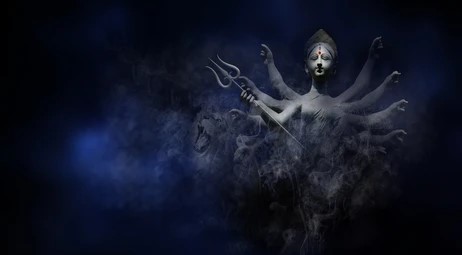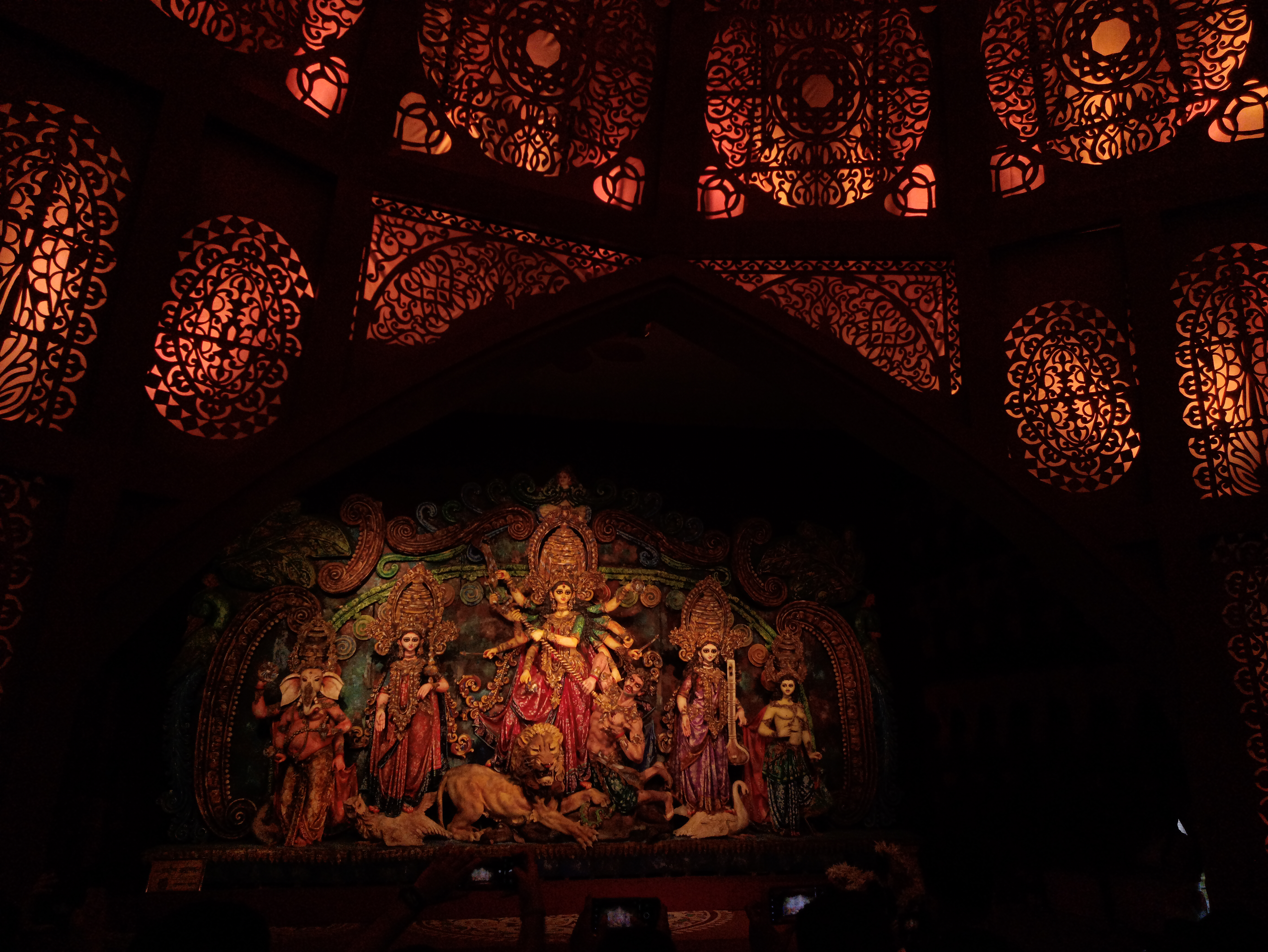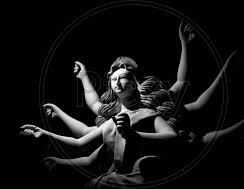| DURGA PUJA | |||
|---|---|---|---|
|
Durga Puja also known as Durgotsava or Sharodotsav, is an annual festival originating in the Indian subcontinent which reveres and pays homage to the Hindu goddess Durga, and is also celebrated because of Durga's victory over Mahishasura. It is particularly celebrated in the Eastern Indian states of West Bengal, Bihar, Jharkhand, eastern Uttar Pradesh, Assam, Odisha and by Hindus in Bangladesh. The festival is observed in the Indian calendar in the month of Ashvin, which corresponds to September–October in the Gregorian calendar. Durga Puja is a ten-day festival, of which the last five are of the most significance. The puja is performed in homes and public, the latter featuring a temporary stage and structural decorations (known as pandals). The festival is also marked by scripture recitations, performance arts, revelry, gift-giving, family visits, feasting, and public processions called a melā. Durga Puja is an important festival in the Shaktism tradition of Hinduism. Durga Puja in Kolkata has been inscribed on the intangible cultural heritage list of UNESCO in December 2021. As per Hindu scriptures, the festival marks the victory of goddess Durga in her battle against the shape-shifting asura, Mahishasura.Thus, the festival epitomizes the victory of good over evil, though it is also in part a harvest festival celebrating the goddess as the motherly power behind all of life and creation.Durga Puja coincides with Navaratri and Dussehra celebrations observed by other traditions of Hinduism. |
 |
||
|
THE GRANDEST FESTIVAL OF THE YEAR The name Durga, and related terms, appear in Vedic literature, such as in the Rigveda hymns 4.28, 5.34, 8.27, 8.47, 8.93 and 10.127, and in sections 10.1 and 12.4 of the Atharvaveda. A deity named Durgi appears in section 10.1.7 of the Taittiriya Aranyaka. While the Vedic literature uses the word Durga, the description therein lacks legendary details about her or about Durga Puja that is found in later Hindu literature. A key text associated with Durga Puja is Devi Mahatmya, which is recited during the festival. Durga was likely well established by the time this Hindu text was composed, the date of which scholars estimate as between 400 and 600 CE. The Devi Mahatmya scripture describes the nature of evil forces symbolised by Mahishasura as shape-shifting, deceptive, and adapting in nature, in form and in strategy to create difficulties and thus achieve their evil ends. Durga calmly understands and counters the evil in order to achieve her solemn goals.Durga, in her various forms, appears as an independent deity in the Indian texts.
In the Mahabharata, both Yudhisthira and Arjuna invoke hymns to Durga. She appears in Harivamsa in the form of
Vishnu's eulogy and in Pradyumna's prayer. There exists variation in Durga Puja worship practices and rituals, as is the case with other Hindu festivals, in the Indian subcontinent. Hinduism accepts flexibility and leaves the set of practices to the choice of the individuals concerned. Different localized rituals may be observed regionally, with these variations accepted across temples, pandals, and within families. The festival is most commonly associated with Bengali Hindus, and with the community having variability and differences in practices. There may exist differences of practice between the puja of theme-based Pandals, family pujas (with puja of erstwhile aristocrat families known as bonedi puja), and community pujas (known as barowari pujas) of neighbourhoods or apartments. The rituals of the puja also varies from being Vedic, Puranic, or Tantric, or a combination of these.The Bengali Durga Puja rituals typically combine all three. The non-Bengali Durga Puja rituals tend to be essentially Vedic (srauta) in nature but they too incorporate esoteric elements making the puja an example of a culmination of Vedic-Tantric practices. Historical evidence suggests that the Durga Puja has evolved over time, becoming more elaborate, social, and creative. The festival had earlier been a domestic puja, a form of practice that still remains popular. But it had also come to be celebrated in the sarvajanin (public) form, where communities get together, pool their resources and efforts to set up pandals and illuminations, and celebrate the event as a "mega-show to share".The origins of this variation are unclear, with some sources suggesting a family in Kolkata reviving such celebration in 1411 CE. While other set of sources suggest that a Bengali landlord, named Kamsanarayan, held a mega-show puja in late 16th-century Bengal.[125] Yet, this festival of Bengal is likely much older with the discovery of 11th and 12th-century Durga Puja manual manuscripts such as Durgotsavaviveka, Durgotsava Prayoga, Vasantaviveka and Kalaviveka. The rituals associated with the Durga Puja migrated to other regions from Bengal, such as in Varanasi, a city that has historically attracted sponsorship from Hindus from various parts of the Indian subcontinent including Bengal. In contemporary India, Durga Puja is celebrated in various styles and forms. In Bishnupur, West Bengal, Durga Puja holds a unique and significant place. The district boasts the Rajbari Durga Puja, also known as the Mrinmoyee Maa er pujo, which dates back to 994 AD. This makes it the oldest Durga Puja in the entire Bengal region, encompassing present-day Bangladesh, Odisha, and Tripura. |
|||
 |
 |
 |
 |
HOME | |||